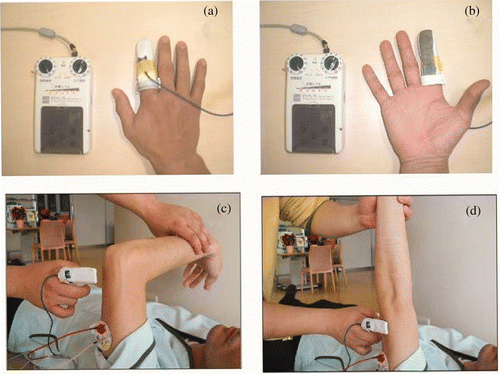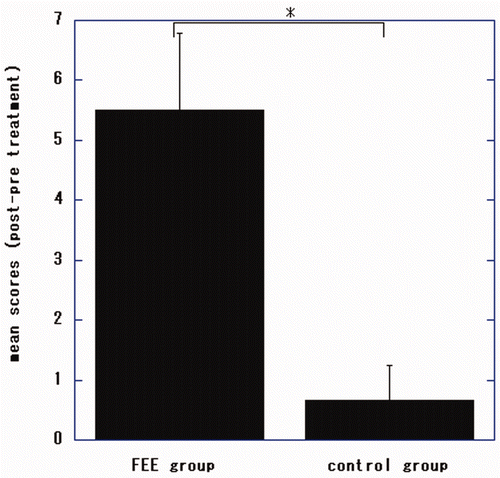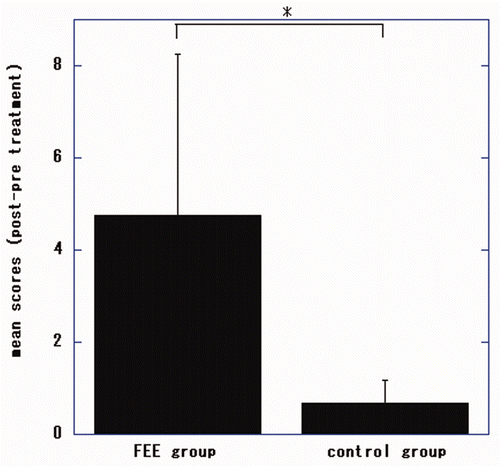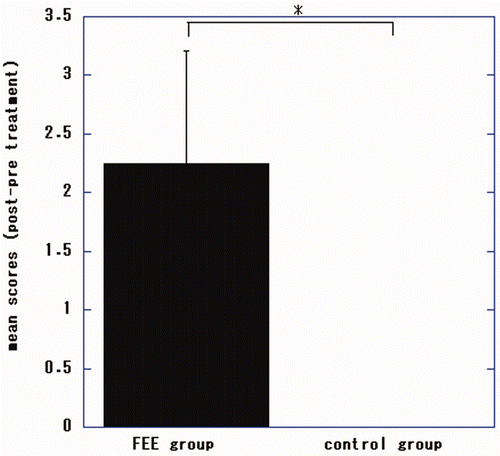Figures & data
Figure 1. (a, b) Characteristics of the FEE, which is made of metal-coated fabric. (c, d) A treatment session (for elbow extension) using the FEE. One self-adhesive electrode was placed on the proximal side of the triceps brachii muscle. The therapist, outfitted with the FEE on a finger, said ‘Raise your hand as far as you can’ and started to assist the patient's motion (if any residual extension was possible). Then, the FEE was applied to the skin over the nerve which innervated the muscle to promote contraction. The muscle contraction was repeated 50-times.

Table I. Baseline clinical characteristics of two groups
Figure 2. Changes in Fugl-Meyer Assessment (FMA) total scores for the upper extremities of patients undergoing electronic stimulation by the finger-equipped electrode (FEE-ES) and control patients after 4 weeks of treatment. Data are mean ± SD of each individual patient of both groups (scores of post-treatment minus pre-treatment). The asterisk indicates that the Wilcoxon-Mann-Whitney test showed that the difference between the two groups was statistically significant (p = 0.032).

Figure 3. Changes in Fugl-Meyer Assessment (FMA) scores for the proximal upper extremities of patients undergoing electronic stimulation by the finger-equipped electrode (FEE-ES) and control patients after 4 weeks of treatment. Data are mean ± SD of each individual patient of both groups (scores of post-treatment minus pre-treatment). The asterisk indicates that the Wilcoxon-Mann-Whitney test showed that the difference between the two groups was statistically significant (p = 0.026).

Figure 4. Changes in Fugl-Meyer Assessment (FMA) scores for the distal upper extremities of patients undergoing electronic stimulation by the finger-equipped electrode (FEE-ES) and control patients after 4 weeks of treatment. Data are mean ± SD of each individual patient of both groups (scores of post-treatment minus pre-treatment). The asterisk indicates that the Wilcoxon-Mann-Whitney test showed that the difference between the two groups was statistically significant (p = 0.026).
